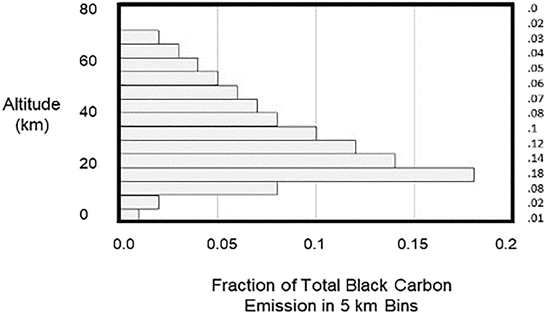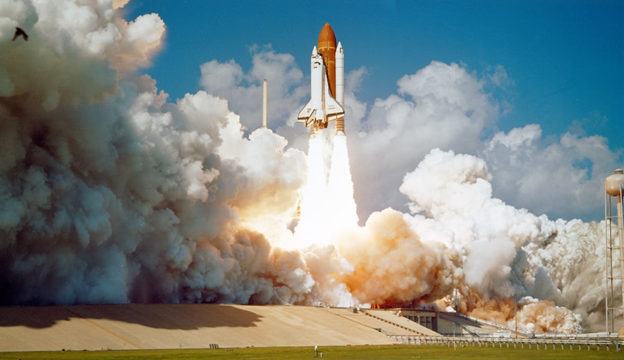By Arham Saeed
Opinion.
On August 23, 2023, India became the fourth country to land on the moon, an advancement that caught the attention of many. Mission Chandrayaan-3 was a project that aimed to land a spacecraft on the moon, and it accomplished just that (Corum, 2023). Space exploration requires an abundance of resources and has a massive ecological footprint, even playing a role in climate change (Twiss, 2022). Although space exploration like Mission Chandrayaan-3 is essential to broaden our understanding of the universe, is its toll on Earth’s environment and ecosystem worth it?
Space exploration started with the aim of research. However, the commercialization of space travel is changing this aim, and there are alarming concerns about its effect on the environment. According to a report by the National Oceanic and Atmospheric Administration (NOAA), a passenger aboard a rocket contributes 100 times the amount a passenger on a plane towards climate change (Kluger, 2023). Moreover, the CEO of SpaceX recently announced their intent to launch their starship three times a day, hoping to achieve bi-weekly flights by next year (Twiss, 2022). Each flight contributes greenhouse gases to the atmosphere, like carbon dioxide (CO2) and a detrimental pollutant called black carbon (Twiss, 2022).
CO2 is a greenhouse gas that is present within the atmosphere of Earth. When sunlight enters our atmosphere and reflects off the planet’s surface, CO2 absorbs and disperses this radiant energy in all directions. This process allows Earth to retain some radiant energy, helping maintain a habitable temperature. However, high concentrations of CO2 block too much radiant energy from escaping, heating up Earth (Lindsey, 2023).
Moreover, the black carbon released by these launches is exceptionally harmful to Earth, even more so than CO2. Black carbon is deposited into the mesosphere (the third layer of Earth’s atmosphere) by rockets, affecting multiple layers of the atmosphere for a more extended period as it lands on the surface of Earth. Figure 2 displays the percentage of black carbon deposited at each altitude, where the mesosphere is between 50–80 km (anon., 2023). As displayed, a large portion of black carbon ends up in the mesosphere. Black carbon is approximately 500 times more absorbent to radiant light than regular CO2 (Piesing, 2022), implying that black carbon’s ability to prevent radiation from escaping Earth is also 500 times greater than that of CO2. The primary reason these rockets have such a massive effect on climate change is because of black carbon.

When a rocket is launched into space, one part travels to space while the rest falls back onto Earth. This debris either ends up in the ocean or on land. If it falls into the ocean, it’s rarely cleaned up. Rocket debris that crashes on land is sometimes cleaned up, but the damage it causes to Earth isn’t fixed (Stansbery, 2023). As space launches increase, the amount of space garbage on land and in water will exponentially increase, damaging land and aquatic ecosystems that aid us against climate change.
Although exploring our universe is vital, space exploration must be regulated, and alternative sustainable methods must be found to alleviate its contribution to climate change. So much of the universe has already been explored, yet not a single planet is like Earth, so taking care of this home is vital for both our existence and future space exploration.
Sources
Anon. 2021. The Space Shuttle Challenger launching from Complex 39. Unsplash. Url: https://unsplash.com/photos/dCgbRAQmTQA (accessed 14 Sep. 2023).
Anon. 2023. The Mesosphere. University Corporation for Atmospheric Research. Url: https://scied.ucar.edu/learning-zone/atmosphere/mesosphere (accessed 1 Oct. 2023.
Corum, J. 2023. What it looked like when India landed on the moon. [online] The New York Times. Url: https://www.nytimes.com/interactive/2023/science/india-moon-landing-photos.html (accessed 14 Sep. 2023.
Kluger, J. 2023. Is space travel good for the environment? No. Time. Url: https://time.com/6273065/space-travel-climate-impact/ (accessed 14 Sep. 2023).
Lindsey, R. 2023. Climate change: Atmospheric carbon dioxide. NOAA Climate.gov. Url: https://www.climate.gov/news-features/understanding-climate/climate-change-atmospheric-carbon-dioxide (accessed 14 Sep. 2023).
Maloney, C.M. 2022. Fraction of Total Black Carbon Emission in 5 km Bins . AGU – Advancing Earth and Space Sciences .Url: https://agupubs.onlinelibrary.wiley.com/cms/asset/c0393d17-ccd1-4ddf-8880-b237a0e96824/jgrd57984-fig-0001-m.jpg (accessed 1 Oct. 2023).
Piesing, M. 2022. The pollution caused by rocket launches. BBC Future. Url: https://www.bbc.com/future/article/20220713-how-to-make-rocket-launches-less-polluting (accessed 14 Sep. 2023).
Stansbery , E.K. 2023. Frequently Asked Questions. Astromaterials Research & Exploration Science NASA ORBITAL DEBRIS PROGRAM OFFICE. Url: https://orbitaldebris.jsc.nasa.gov/faq/# (accessed 14 Sep. 2023).

Hey, I’m Arham! I’m a second-year student at McMaster University studying Integrated Science and concentrating in Biology. My favourite hobby is basketball and I love Star Wars! I also have a passion for helping my community, which I do in countless ways. One example is my involvement with Dare to Be You(th) Charity as a Community Youth Council member.





